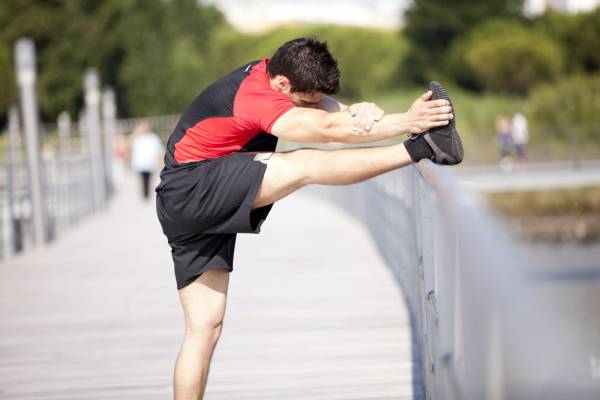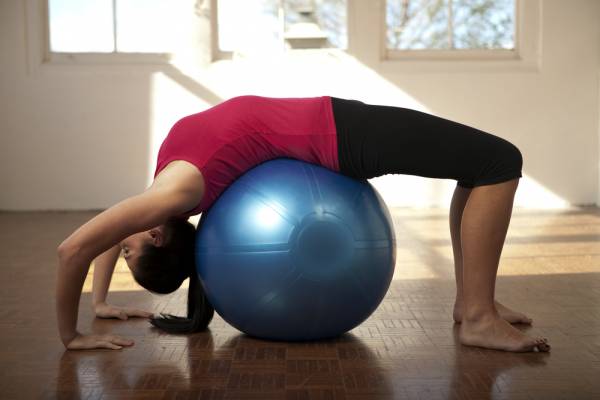Like it or not, life is full of polar opposites. The yin AND yang nature of everything around us sometimes gets lost in the quest for a better body or better performance.
We train more. We train heavier.
Everyone talks about this or that hardcore session making them puke. But how many people do you ever hear doing hardcore recovery sessions or working their movement abilities to the max? Where is the time spent reversing the side effects of training that are undesirable, such as muscle soreness or shortening?
People are happy to spend time training like a bad ass and trying to impress everyone else in the gym. The real key to athletic success is to not care at all about what others think of your training, but let your athletic results speak for you. Training and competition are two entirely different things. Training is to build the body and allow improvements to occur, and competition is the time to let it all hang out and truly go to your limits. Obviously, like redlining a car all day long, going to your limits too often will cause problems at some point.
Recently I heard a great quote about running in triathlon, “The best way to run well in a race is to be a good cyclist and a great swimmer.” Meaning if you are strong and can relax in the water you’ll get to the bike relatively fresh. Then, because of your cycling abilities you can cruise the ride allowing you to lace up and head out of transition on seemingly fresh legs.
In Guys Like Me: 4 Keys to Fitness for Mature Athletes, I wrote that my first two keys to athleticism in your 40s and beyond were: movement and movement. Taking this concept a step further, do you know what makes you move well? Not moving poorly in the first place and avoiding exercises that don’t suit you.
I can give you a great personal example:
Having torn my right hamstring completely off the bone there are some things that just really upset it. It’s been reattached, and works pretty well for the most part, but there are just some things I shouldn’t do like hill sprints and barbell snatches. There’s nothing wrong with either exercise, but for me, with my injury history, both of these exercises will leave me so sore for days afterwards I can’t even move, let alone train (and in the case of snatches would likely see me needing a hip replacement if I did them often).
 So, if you’re an office worker who spends all day hunched over a desk don’t choose cycling as your hobby. That’s just more time spent hunched over and compounding the problem. Find something that gets you back into good posture and teaches you how to use your posterior chain properly again (and actually some modified Olympic lifts and hill sprints would be excellent choices for many here).
So, if you’re an office worker who spends all day hunched over a desk don’t choose cycling as your hobby. That’s just more time spent hunched over and compounding the problem. Find something that gets you back into good posture and teaches you how to use your posterior chain properly again (and actually some modified Olympic lifts and hill sprints would be excellent choices for many here).
But if you’ve already taken the steps of making sure your training isn’t hurting you, here are some essential pre-emptive mobility tips for the everyday athlete trying to eke extra performance out of their bodies.
Training adaptations don’t actually take place while you train.
They take place while you rest. If your rest and recovery strategy isn’t as hardcore as your training is you won’t go far for long before injury rears it’s ugly head. My best training results have come from following a “two on, one easy” scheme. At other times I have found as a business owner that the first week of the month is an ideal time to have a recovery week allowing me to finish off last month’s paperwork and plan the new month out ahead of time. Making training fit with the rest of life is the biggest key to ongoing success.
1. Sort your feet and ankles out.
The kinetic chain of movement starts at the feet, as they are the first contact point with the ground. All the force you generate by pushing on the ground needs to be transferred through your feet and ankles. No good “going barefoot ‘cause Paleo man did, too” if your feet collapse and you have them turned out like a duck.
Spend some time working to regain full movement patterns in your ankles and strengthening the soles of your feet and lower legs. Make sure you walk with your feet pointing straight ahead. While we’re at it, learn to stand up straight, too, and find ways to remind yourself to walk with your feet pointing ahead throughout the day. If you don’t do this, don’t come crying to me about how you’ve destroyed your medial knee cartilage while training for a marathon.
2. Stretch patiently.
Pavel Tsatsouline has an excellent book called Relax into Stretch. The short version goes like this: Your muscles sense a change in length and tighten up in order to protect themselves from tearing. While unconscious everyone can do the splits I’ve been told. Yet awake we have these learned limits to our range of movement. You’ll find if you breathe deeply and consciously relax that all of a sudden, while in a stretch position, you’ll suddenly feel the body drop lower or the limb move further. Some positions you’ll have to wait far longer than others. My hamstring, for instance, can take up to twenty minutes at times to relax and get to the length I want. So find a comfortable position to stretch where you’re tight and just wait it out.
3. Bridge.
This really should be first in our priorities but you need to understand relaxed stretching first. Given how we all spend hours a day sitting in flexion, bridging could be the fastest way to get your spine back into alignment.
There are three steps to bridging –
 Use a Swiss ball.
Use a Swiss ball.- Lie on your back on the ball and “make yourself taller” by consciously arching around the ball – think like a snake trying to wrap itself completely around the ball, so every vertebrae has the same distance between it.
- Wait. Seriously, just wait. Relax into the movement, breathe deeply and allow your body to slowly let gravity work on it and pull you back into position.
The bottom line is this – learning to avoid things that are hurting you is no different than learning not to touch the hot plate. Yet people keep doing it and wonder why they either don’t get anywhere (because they’re always injured) or why they’re always injured. Just because an exercise or training plan works for someone else (and this is particularly the case when recreational trainees start trying to emulate what the professionals do), doesn’t mean it will work for you. Listen to your body and act accordingly.
The best plan to maintain good movement skills is to never lose them in the first place. However, if you have lost them and you recognize the need to regain them, then you will need to spend as much time as you would on anything else you were seeking to increase. For instance, you’d think nothing of spending three to five hours per week on improving strength, so if mobility is deficient then you will need the same amount of time to improve it per week, and likely will need to make it a focus for four to six weeks, too. Take this seriously if you plan to remain active into the second half of your life.
Stay on top of these little things – feet and ankles, bridging, stretching and recovery – and your training will seem to continue seamlessly for long stretches without interruption. Otherwise you’ll just follow Mark Reifkind’s “classic tough guy periodization” of “heavy, heavier, heaviest, injury…light, light, light, light, heavy, heavier, heaviest, injury…” The question you need to ask yourself is what is important to you – looking tough right now, but ignoring those little aches and pains, or being fit forever?






